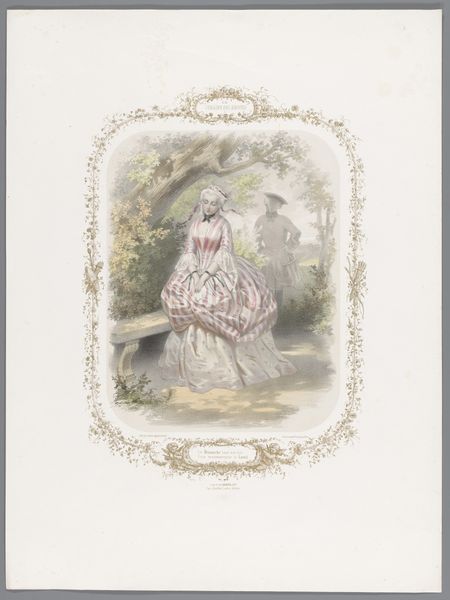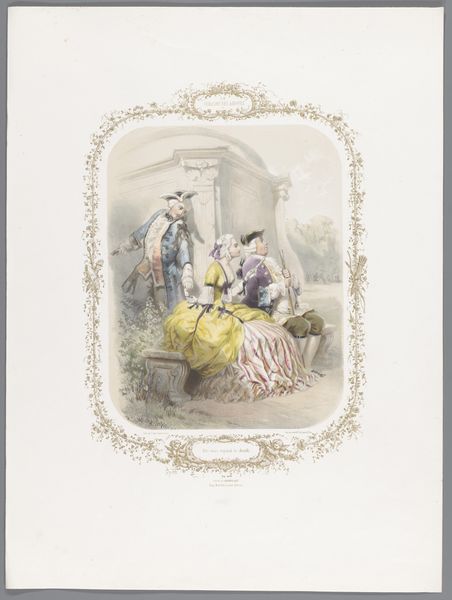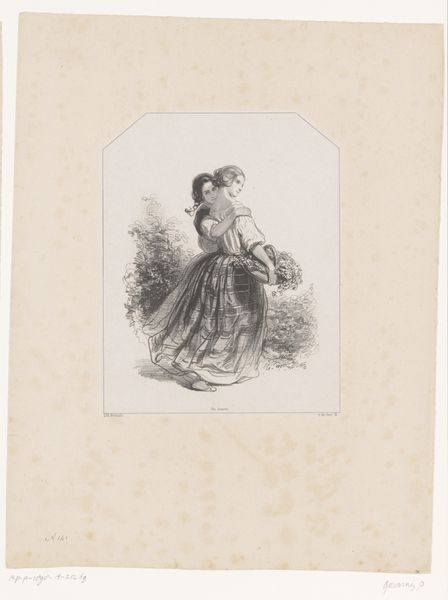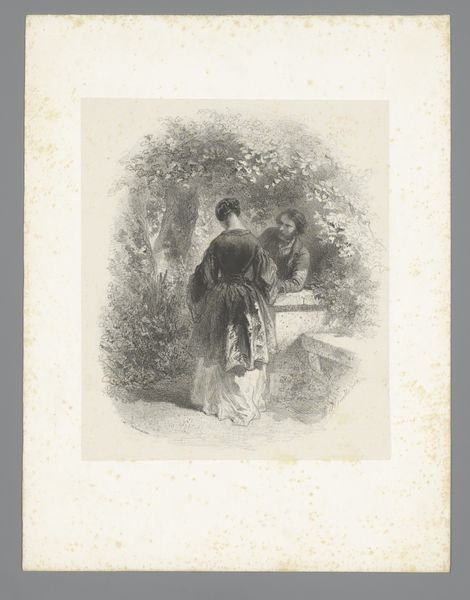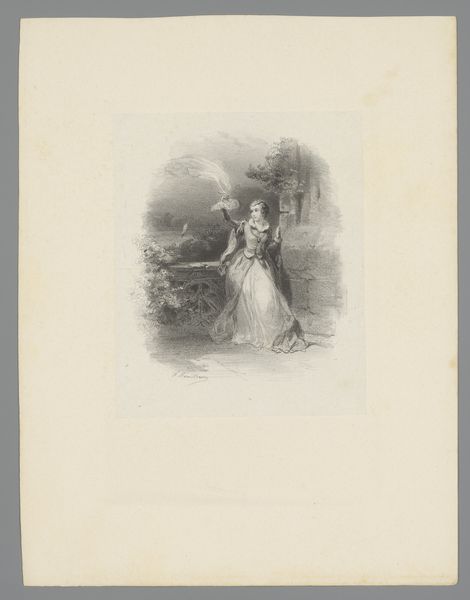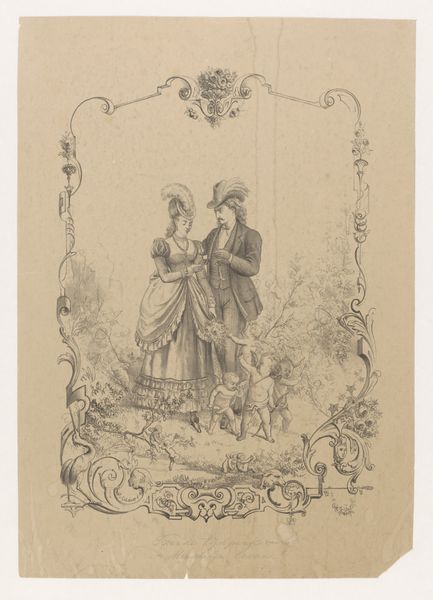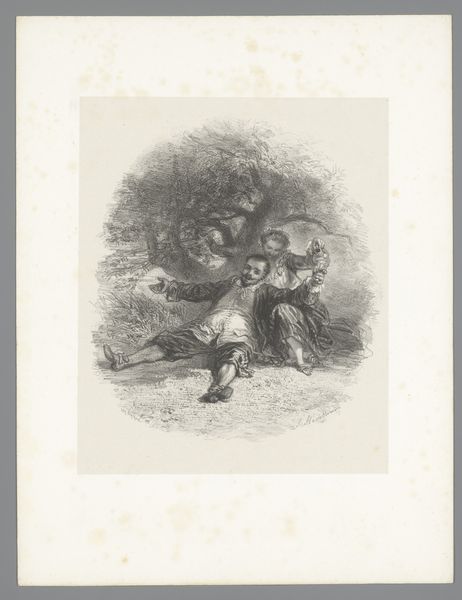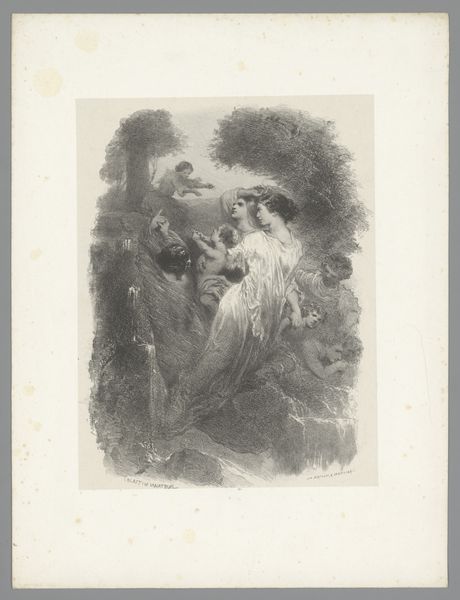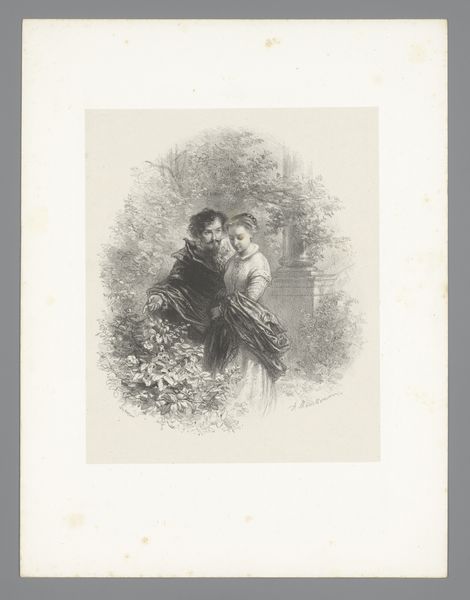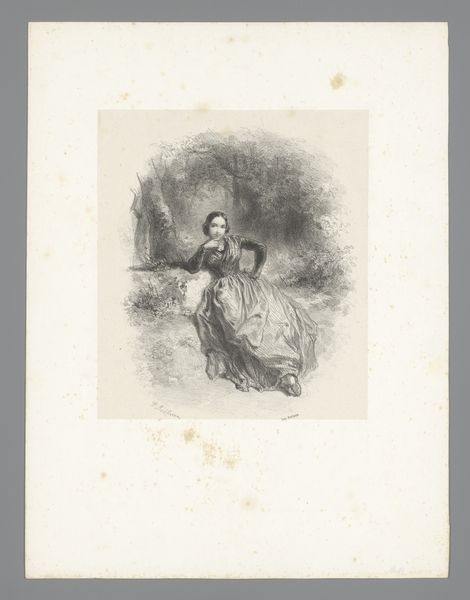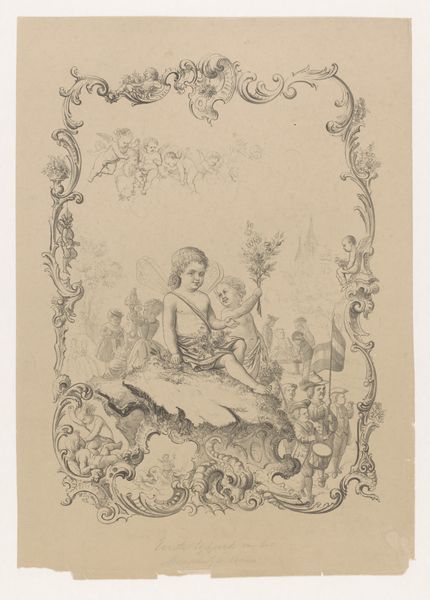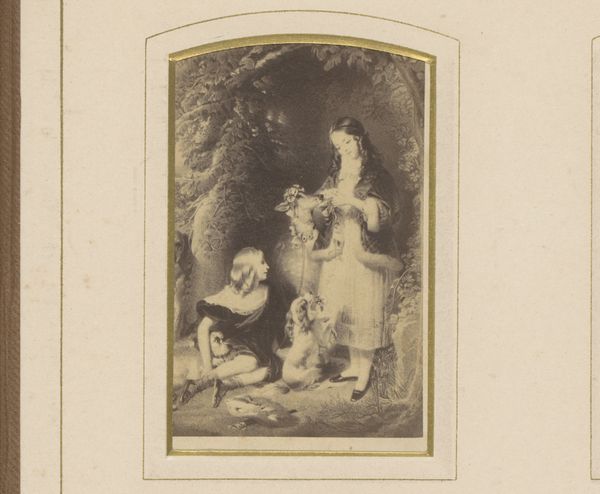
#
water colours
#
pastel soft colours
#
white palette
#
handmade artwork painting
#
coloured pencil
#
watercolour bleed
#
watercolour illustration
#
natural palette
#
pale flat background
#
watercolor
Dimensions: height 576 mm, width 433 mm
Copyright: Rijks Museum: Open Domain
Ernest Jaime made this print of two lovers kissing using a technique called lithography. Lithography, unlike etching or engraving, is a planographic process, meaning the artist draws on a flat surface, in this case limestone, with a greasy crayon, fixing the image with acid before applying ink. The ink adheres to the greasy areas and is repelled by the rest of the stone, allowing for multiple impressions. It’s a clever technology, directly tied to the rise of print culture and mass media in the 19th century. Jaime adds color to his lithograph, imitating the aesthetic of watercolor painting. This creates soft gradations of tone and texture, seen in the lush foliage and the fabrics worn by the figures. The relatively low cost of production meant that images like these could be distributed widely, bringing fashionable aesthetics to a broad audience. As you can see, by considering the materials and processes used to make it, we can gain insight into the artwork's cultural and social significance, bridging the gap between fine art and the applied arts.
Comments
No comments
Be the first to comment and join the conversation on the ultimate creative platform.

